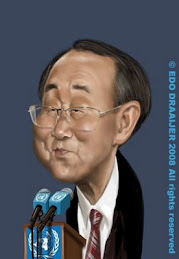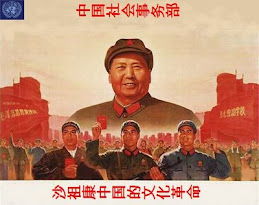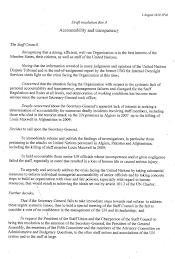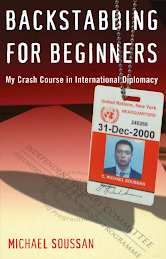
For the first time in years, I find that middle-class people I talk with in Zimbabwe don’t want to discuss politics or even economics. They want to express dismay at the stifling grip that international NGOs and aid agencies have on their lives and work. I am reminded of Joe Hanlon’s analysis of Mozambique as it emerged from the war with Renamo.[1] No-one is claiming here, as Hanlon did there, that donor communities are manipulating food aid to win political concessions. But the donor organisations have disproportionate influence as employers and investors, particularly in the arenas of agriculture and the arts. During the worst periods of the past decade, they provided a lifeline for many people among the educated middle classes who found themselves with no other employment choices. But, when the shore is in sight, do you want to remain tethered to the lifebelt?
Are They What They Seem?
FROM SCISSION AT http://oreaddaily.blogspot.com/
NGOs: ARE THEY WHAT THEY SEEM?
Ten years or so ago in their book Empire, Antonio Negri and Michael Hardt argued that NGOs like Oxfam and Medecins Sans Fronieres, actually play a lead role in laying the foundation for interventions by global capital by building public support behind humanitarian concerns. They took some crap for that. It isn't nice to question these NGOs and we all are supposed love them and see them as allies in the struggle for justice and against the global juggernaut. Not everybody does though, including some of the "recipients" of their aid. Some think the Cubans and the Chinese do a much better job at listening to the people they are "helping" then these big time NGOs.
Take a read of the long analysis below and you may have to reassess what you think. It is from African Arguments.
Parasites Of The Poor? International NGOs And Aid Agencies In Zimbabwe — By Diana Jeater
August 8, 2011
54tweetsretweet 51Share
This blog is called ‘Rethinking Zimbabwe’. It seems that a lot of people in Zimbabwe want some rethinking about the operations of international NGOs and aid agencies here. This is, of course, not a new conversation: international NGOs and donor organisations are perennially under scrutiny and criticism. But right now, it seems like an urgent conversation.
For the first time in years, I find that middle-class people I talk with in Zimbabwe don’t want to discuss politics or even economics. They want to express dismay at the stifling grip that international NGOs and aid agencies have on their lives and work. I am reminded of Joe Hanlon’s analysis of Mozambique as it emerged from the war with Renamo.[1] No-one is claiming here, as Hanlon did there, that donor communities are manipulating food aid to win political concessions. But the donor organisations have disproportionate influence as employers and investors, particularly in the arenas of agriculture and the arts. During the worst periods of the past decade, they provided a lifeline for many people among the educated middle classes who found themselves with no other employment choices. But, when the shore is in sight, do you want to remain tethered to the lifebelt?
Aid agencies are mistrusted not least because they are perceived as part of the political strategies of donor governments – whether directly through organisations such as USAID, DfID or NORAD, or indirectly through the various arms of the UN. Regardless of their rhetoric, these organisations are primarily answerable to their tax payers and thereby to their electorates. When dealing with Zimbabwe, western aid agencies have political imperatives to distance themselves from the Zimbabwean government. And so we find DfID’s summary of its work for 2011-15 commenting that, “real transformation and sustained development progress is only likely following political change.”[2] This may make a lot of sense in London; but it is not very helpful for people working damned hard in rural villages in Zimbabwe, in order to effect ‘real transformation and sustained development progress’, to be told that they are wasting their time because (subtext) Zanu-PF is not yet in opposition. And this is regardless of any actual benefits that they know their work is achieving.
Aid agencies also need to distance themselves from any suspicion of complicity with corrupt or inept local institutions, whether governmental or from civil society. Consequently a very large amount of their paperwork, strategy development, definition of successful outcomes and self-evaluation is focused on auditing of their financial management: “More than ever, in the current financial climate, we have a duty to show that we are achieving value for money in everything we do,” states DfID. “Results, transparency and accountability will be our watchwords and we are determined to get value for money for every hard-earned taxpayer pound spent on development.” But what counts as ‘value’? Value is about British tax-payers’ money, not about the quality of life for Zimbabweans:
“In Zimbabwe, DFID will embed a strong focus on value for money, monitoring and evaluation, ensuring all feedback is effectively incorporated. We will dedicate specific staff resources to improving value for money within our programme e.g. through more rigorous procurement approaches. We will harness financial improvement strategies and tools to ensure we drive continued improvement in financial management and to maintain high standards.”[3]
Of course, this makes perfect sense from the perspective of the donors. Like government aid agencies, international NGOs such as Oxfam understandably have to take their cue from similar concerns about accountability for every penny spent. But the concerns are inward-looking and reflect the vested interests of the donors. The beneficiaries become the ‘product’, not the clients; and certainly not people who might perhaps themselves have a different view on what would constitute ‘value for money’.
Moreover, there is a strong belief that these agencies are so big that they can hardly see the wood, never mind the trees – and certainly not the bugs that live on the trees, in whose name the work is being done. Their focus is the national or, at best, the district level. The ‘political change’ that DfID identifies as necessary for Zimbabwe obscures local transformations that have occurred despite, and in some cases even because of, the current government’s strategies. The supporters’ newsletter for the small but very successful Quaker-funded Hlekweni training centre near Bulawayo, for example, reported that:
“Jabulani studied at Hlekweni in 2009, and at the age of just 21 now has a thriving agriculture and horticulture business on 50 hectares of land acquired under a government scheme. While much of the land redistribution in Zimbabwe has been a disastrous failure – partly due to the lack of skills among beneficiaries – Jabulani has used his Hlekweni training to produce large yields of maize, beans and butternut, and to raise a herd of 136 cattle, creating a good income for his family and jobs for local people.”[4]
Elsewhere here on ‘African Arguments’, Clare Short argued against such small-scale projects in favour of strategic national-level intervention:
“The question was how to stop aid being lots of little charitable projects and to use it intelligently to empower countries to lift themselves up, get their own people educated, run their own ministries, grow their own economies. The point about DFID was that it ceased to be just an aid distribution department and took on analytical capacity (to work on) trade and international environmental agreements and conflict resolution and so on.”[5]
This is no doubt very exciting for those involved in grand strategy-making in London. But national-level policy-making means that consultation about what is needed often happens at the wrong level. I recently pointed out to a friend that an international NGO was taking on 22 project workers to develop beehives, boreholes and agricultural training in eastern Zimbabwe. She pointed out that, in her experience, boreholes weren’t necessarily a priority in the targeted areas. There is clearly a suspicion among people who work for aid agencies that national-level needs are divided by the number of districts, and then by the number of sub-districts, and people in those sub-districts are then provided with their defined ‘need’, regardless of whether it is actually what they want or not.
Moreover, everyone who discusses this issue with me complains that the agendas about what Zimbabwe needs are set externally. For example, Isla Grundy is a forester working to identify processed indigenous foods for the market. During the food shortages arising from drought and agricultural chaos in the early 2000s, rural people turned to indigenous foods to survive: knowledge of these foods is probably higher than it has been for many years. It is a perfect moment to find the Zimbabwean Rooibos tea.[6] Because commercial investors will not touch Zimbabwe at present, her organisation is forced down the donor route. Nonetheless, she told me, her organisation (which has a good track record with donors) has struggled for months to get any aid agency to show interest in any crops other than the mainstream maize, groundnuts and legumes, which form the bedrock of regional strategies for development.
Very often, there is a belief that the aid agendas serve external commercial interests more than local human needs. Today, a farming consultant told me how he despaired at the news that food aid budgets for Zimbabwe from the UN had been revised upwards.[7] ‘How will we grow our own food and re-establish our position as a food exporter when we are flooded with American grain?’, he asked. Similarly, Grundy told me of the attempts to produce a local groundnut-based famine-relief paste.[8] Zimbabwe is one of many African states that have developed their own local substitutes to the French product, Plumpy’nut: indigenous action to solve African problems. But there is an international patent row, which actively prevents local producers from making and marketing a comparable product within Africa. The billions in aid for famine relief put money back into European and US pockets.[9]
Local experts also express frustration at how the external agendas are introduced without proper research into local conditions and history. There has been a recent fad for ‘conservation agriculture’ (CA) – no-till planting. As Jens Andersson, a social scientist with many years experience of agriculture in Zimbabwe pointed out to me, there was no grassroots drive to adopt no-tillage systems. The practice was entirely driven by donor agendas, sending in NGO-funded ‘development workers’ to teach people this exciting new technique that would revolutionise their yields.
Except it wasn’t new; and it didn’t revolutionise yields. No-tillage systems had been introduced by extension workers in the past and were already part of local knowledge. Moreover, said Andersson, any benefits recorded in yield increase from no-tillage planting in the current CA campaigns would be the result of the input of the fertiliser donated as part of the project, not a result of the no-tilling strategy per se. The fertiliser, of course, has been produced by a western multinational.
The lack of local knowledge, amongst the ex pats who design and run development projects here, is a source of constant irritation. These aid workers are typically academically brilliant, well-educated and extremely well meaning. But they are also very young (‘He looks about sixteen’); they are moved around from project to project and country to country (even from continent to continent) without having a chance to develop deep local knowledge; and as a general rule they have been trained in economics or development studies, not in anthropology or history. An agriculturalist here told me in horror about working with a project leader for an international child-based programme, who had explained that there was no point in asking the children to follow the normal programme practice of describing their family trees because ‘Shona children just call everyone auntie or uncle and don’t really know how they’re all related’!. These expats employ Zimbabweans to provide the local expertise; but by this stage it is too late in the process. The planning, strategy, budget allocation, agenda-setting – and the mind-setting – have already taken place.
‘No-one is listening to what we really want’ is a constant refrain. Listening takes time, and often people don’t actually know what they want; they need a space in which to find that out for themselves. One of the most effective projects I’ve encountered, Bright Tomorrows Zimbabwe, works with care-givers for AIDS orphans. It doesn’t provide them with material goods or have outcomes that can be ticked against a box; it just encourages them to meet regularly to discuss the life journeys of the children in their care, and the support that the children will need to fulfil their potential. One exhausted old woman, who had struggled to bring up her own children only to see them all die and now having to raise her grandchildren, reported after some time on the programme that she had stopped beating her wards. The issue of beating hadn’t been raised as part of the programme. Yet she said that the experience of being in a supportive group where people listened to their needs had made all the difference: she was now able to cope with her situation and to understand how the children were thinking. She was learning to enjoy her life with them. This didn’t take a lot of money – it took time and commitment. Jeannie Sinclair, the amazingly inspirational worker who told me this story, added that their programme was tiny because no large agency wanted to fund a project that didn’t deliver tangible and measurable outcomes.
The question of how far the aid agencies engage with communities and genuinely listen to their needs is hardly a new one. When I first started working in Zimbabwe in the 1980s, I was initially impressed at how all the NGO workers I met emphasized the need to listen to rural women. I was quickly disillusioned when I realised that ‘listening’ meant ‘finding out how to present what we want to deliver in ways that make them acceptable to rural women’.[10] But ‘listening’ is becoming political. According to a recent report, a World Bank official asked the official of the Chinese Ministry of Commerce:
“Do you know why you Chinese are more successful in the aid issue?…It’s just because we know what aid we can provide in Africa while you don’t know. Since you are not clear, you ask the Africans about this and they told you what they exactly need. That is the reason you are more successful.”[11]
Once again, the priorities of communities are subsumed in the needs of external aid agencies – ‘listening’ is a means to further other nations’ strategic interests.
The perception amongst workers who are trying to make a difference at the grassroots in Zimbabwe is that big aid agencies such as UNICEF and DfID don’t engage with communities to find out what they need; they deliver to them. Jeannie Sinclair described turning up for a session with her care-givers one day, to find the village filled with DfID Land Cruisers and people from the district whom she had not met before. Apparently this was the ‘delivery’ of DfID’s gender-based violence programme. The DfID team swooped in, gave everyone free Coca-Cola and a text to keep about GBV, and then swooped out again. The free drink and the hoohah attracted scores of participants, who could be recorded on the programme report. Job done?
A combination of tight auditing and external agenda-setting influences the evaluation of projects, and this in turn affects the project design. In order to be reportable, outcomes must be measurable. In order to be measurable, they must be tangible. There is a common complaint is that aid agencies only recognise ‘things’ as outcomes, not relationships. Again, this is not new. I remember in 1990 Sithembiso Nyoni of the ORAP project in Bulawayo telling me about her struggle to get funding from Oxfam USA. They required, for auditing purposes, a commitment that a certain number of wells would be built within a certain time period. She argued that development was about changing relationships within communities, not about building things. Once the relationships were working effectively, the wells would follow and would be effective. Eventually, and unusually, the donors agreed to let things take as long as they needed. But this was an unusual situation involving an exceptionally powerful local organisation.
Today, the auditing systems of aid agencies continue to disregard changes in relationships, as tangible outcomes of development work. At Hlekweni, Jabulani spoke about how the success of his business was only meaningful in the context of his community relationships:
My responsibility is to make sure that people in my area have enough maize and vegetables to eat. To me, business is about doing something that is good for you, and at the same time it is good for your community…At Hlekweni, I didn’t only get agriculture, but I also got my humanity from the trainers here.[12]
But ‘humanity’ is not an outcome that can be measured as evidence of ‘results, transparency and accountability’. A project like Bright Tomorrows, which transforms people’s lives but has nothing concrete to show for it, is perceived as less likely to attract funding than a plan to build an orphanage. Orphanages disrupt kinship networks and indigenous support systems; they disempower children; they are very expensive. But they can be ticked off as evidence of ‘value for money’. Many people here told me that this is what makes building orphanages attractive to aid agencies, even if they’re not wanted and not needed.
Associated with the perception that aid agencies only want to be involved in projects with measurable outcomes is a perception that money-spending is their default mode of problem-solving. Of course, this is part of a larger conversation about the value of throwing money at a problem. Clare Short pointed out in her conversation with Richard Dowden that:
“The patronising dollops of money approach to aid irritates the people on whom it is dolloped and it irritates the British tax payer. It’s just not a good way of doing it.”
But, predictably, her proposed alternative – direct budget support – is still about management of money, not about transformation of lives at the grassroots. Eugene Ulman, a film-maker and music producer in Harare, pointed out to me that Cuban involvement in the arts in Zimbabwe had been much transformative than the work of British organisations such as the British Council ‘because they’re used to working with no money. They come up with solutions that depend on creativity, not resources.’
Indeed, many of the artists with whom I’ve been speaking have been utterly demoralised by their experiences of donor funding. Arthur Chikhuwa, of the now-defunct Capricorn Video Unit, made a good living producing high-quality training and documentary films on ‘social’ issues – until the funding was withdrawn in the wake of the political crises in Zimbabwe. The donors had always determined the agenda and had provided support only for the product. There was never any money to invest in new kit, or to give the Unit space to develop its own products or market. The ‘development’ programmes did not include ‘development’ of the film-making capacity – even where their programmes included capacity-building for the projects featured in the films.
Musicians, too, feel that they have been stifled by their interactions with donors. Whereas governments provide support for the arts in Europe and Australia and philanthropists support the arts in the US and Russia, in Africa the default assumption is that the arts must be part of a development agenda, supported by donor organisations. In a clearly-argued paper, Eugene Ulman and Marcus Gora have observed that
“In Africa, the non-commercial arts, including music, are generally the domain of NGOs, often with donors from outside Africa. These NGOs generally have a socio-economic, educational or developmental agenda, rather than a strictly artistic imperative. Thus, funded not-for-profit music projects usually have a broader developmental mission.
“The mission might be good governance, an anti-corruption campaign, empowerment of women, HIV/AIDS awareness, global warming – all valuable projects in themselves, but the overall structure is not conducive to free artistic expression and unbridled innovation, and does not eliminate the need for other purely musical structures.”[13]
They are concerned that, in such an environment, the arts are controlled by people who have limited knowledge of the local artistic scene and whose primary interests are not to nurture artistic talent, but to meet ‘development’ targets:
“Even when a project is run by a dedicated arts organization, that organization in turn has to raise its budget from other donors who are usually not arts organizations, and fund the projects not for their artistic value but for whatever added value a musical element can bring to their other, non-musical project.”
A similar concern about international donors with instrumentalist concerns stifling local creativity was observed in my previous blog, about the publishing industry in Zimbabwe. Across the creative arts, the international aid organisations are regarded as having a stranglehold on structures and institutions, undermining creativity and distorting the idea of what art is for.
Jeannie Sinclair described a session with her care-givers in which they discussed a picture of a broken bridge, which people were still trying to cross, and which plunged them into dangerous water. One woman commented, ‘People come in and build structures for us. But they don’t explain to us how to fix, develop or mend them. So we go on using them even if they don’t work any more.’ It was clear that she was talking about more than just physical structures like bridges. She was talking about the organisational structures within which everyone in Zimbabwe now has to work.
Rather than seeking out NGO support, many people I spoke with now seem to be trying ways to by-pass it. David Kaulemu, of the Jesuit Arrupe College in Harare, told me that increasingly people have been turning to the churches to support their projects, because the churches create more stable civil society structures than capricious donor organisations. Similarly, the Director of the Harare-based African Fathers Initiative told me that he was increasingly working with the churches. He admitted that churches also had their own agendas, but their agendas were more likely to be set internally within Zimbabwe – and were more likely to accept that ‘gender’ included funding programmes directed towards men.
I must emphasize that I am reporting perceptions here, not empirical data. But the sense that the aid agencies are employers not helpers, who probably do more harm than good, is widespread and deep-rooted. In the very popular memoir, The Last Resort, Douglas Rogers quotes a local aid worker who had previously run a tobacco farm where he had to deal with poor soil, frost, infrastructural maintenance and the livelihoods of four hundred workers and their families:
“Now? I drive around in a white Land Cruiser handing out shitty imported maize seed to poor buggers who don’t know how to farm it. Then I collect a salary in US dollars. It’s not very moral and it doesn’t make me feel very good, but it’s easier than farming.”[14]
Or, in the words of another friend of mine (who depends upon aid agencies to fund her work in rural communities, and so doesn’t want to be named):
“They spend millions but they make no constructive difference. They just meet their funders’ benchmarks and get paid. They are parasites on the poor.”
Diana Jeater
Harare
5th August 2011

























